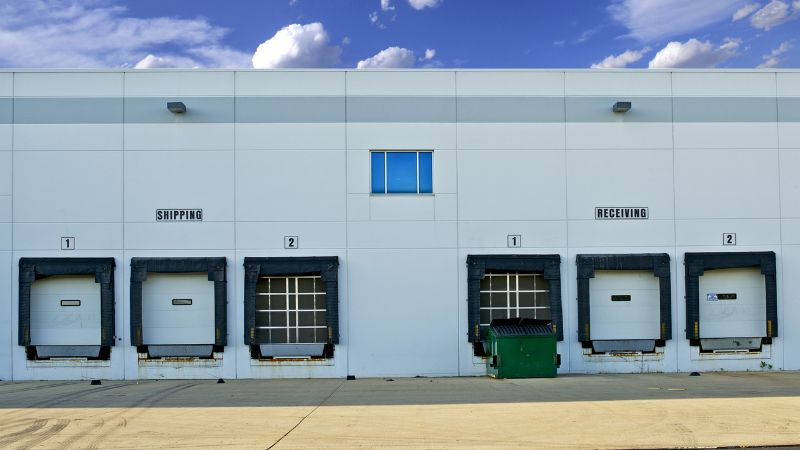Fulfillment leaders today aren’t just managing operations, they’re managing exposure. In a...
Inventory Strategy for Food & Beverage: From JIT to Resilience
The 2020 supply chain crisis was an eye-opening experience for business leaders globally. Empty shelves littered consumer markets nationwide with supply chains scrambling to get products back on the shelves.
Key Ideas
- Most major retailers now require ≥95% on-time in-full (OTIF) delivery with penalties ranging from 3–5% of invoice value
- Relying on one-size-fits-all fulfillment leaves brands open to high-risk inventory exposures, especially in times of high uncertainty.
- Brands are investing in targeted buffer stock, regional DCs, and 3PL partnerships that provide scalable labor and resilient infrastructure.
Supply Chain Maturity Post-2020
Since 2020, Just-in-Time (JIT) delivery has taken much of the blame for widespread supply chain failures—and in many cases, rightly so. But the problem wasn’t JIT itself, rather it was how JIT was applied. Lean systems without buffers, regional redundancy, or contingency planning left many brands overexposed to disruption.
Make no mistake: JIT remains a powerful inventory strategy, with savings of up to 70–90% when implemented with the right controls. But those gains only materialize when JIT is used as part of a broader, risk-aware fulfillment strategy and not just to cut costs. Just-in-Time supply chains were designed to reduce waste by minimizing inventory. The idea was simple: produce and deliver only what’s needed, exactly when it’s needed.
This model once offered clear benefits to food and beverage inventories:
- Lower carrying costs
- Reduced spoilage
- Leaner operations across the board
But as uncertainty grew, retailer expectations tightened, and SKU complexity skyrocketed, so brands needed a new system that could preserve JIT’s benefits without exposing its fragility.
Core Inventory Models and Why Strategies Changed
There’s no one-size-fits-all inventory model. Some brands lean into Just-in-Time to cut costs. Others use Just-in-Case to protect against disruptions. Hybrid models blend JIT and JIC together, using targeted buffers and regional inventory. And increasingly, brands are turning to third-party logistics (3PL) partners to gain access to flexible infrastructure without the capital burden.
Today, brands consider that:
- Transportation Volatility Increases Risk
Freight delays have become a new normal, driven by labor shortages, port congestion, fuel cost spikes, and unpredictable weather. JIT systems, while efficient, offer no safety buffer so even minor disruptions can trigger major fulfillment failures. When speed is everything, volatility makes single-point strategies risky.
- Retailers Expect Near-Perfect Execution
Most major retailers now demand 95%+ On-Time In-Full (OTIF) delivery, with financial penalties up to 5% for missing delivery windows. For brands relying on JIT, any supply short-picks, delays, or routing errors can lead to both lost revenue and retailer friction. Precision is mandatory, but perfection is hard to maintain.
- SKU and Channel Complexity Outpaces Lean Models
F&B brands are juggling more SKUs, pack sizes, and channels than ever before. Retail, DTC, and wholesale are major sales channels with their own timing and compliance demands. Managing all channels and SKUs through a single lean system poses risk in the modern economic environment.
JIT still has a place in today’s fulfillment landscape, but relying on it alone leaves your brand exposed. The most resilient strategies blend speed with flexibility, using infrastructure and partnerships that absorb disruption instead of amplifying it.
Flexible Fulfillment Through 3PL Partnerships
For many brands, the question isn’t JIT vs. JIC—it’s how to build a system that adapts. This is how 3PL partnerships are creating growth opportunities for brands entering US markets. To meet these evolving demands, third-party logistics (3PL) networks offer a flexible fulfillment model built for scale and adaptability, including:
- Shared infrastructure and dedicated SKU lanes able to withstand variable volumes
- Scalable labor pools to match demand levels
- Integrated systems for better visibility and control
The result is that brands gain the speed and agility to deliver on time without overbuilding internal capacity.
Inventory strategy is no longer just about efficiency in today’s environment, it’s about adaptability. Brands are navigating tighter margins, stricter retailer requirements, and supply chain volatility that’s moving beyond static models. Resilience isn’t a nice-to-have, it’s the new baseline for precise execution that’s consistent even during times of higher uncertainty.
Looking to build a more resilient fulfillment strategy? Connect with a Source Logistics specialist to explore flexible inventory models built around operational excellence and growth.




